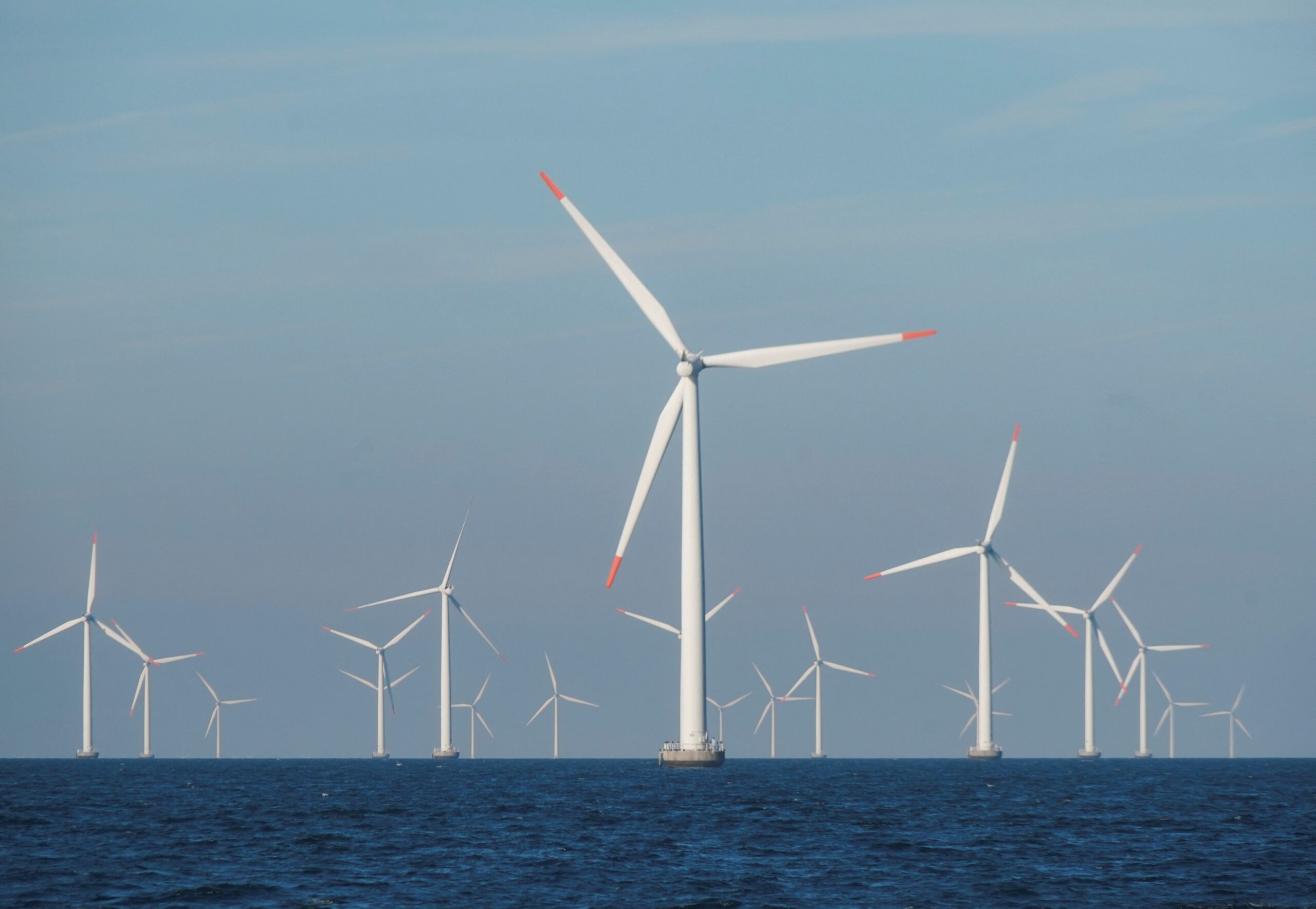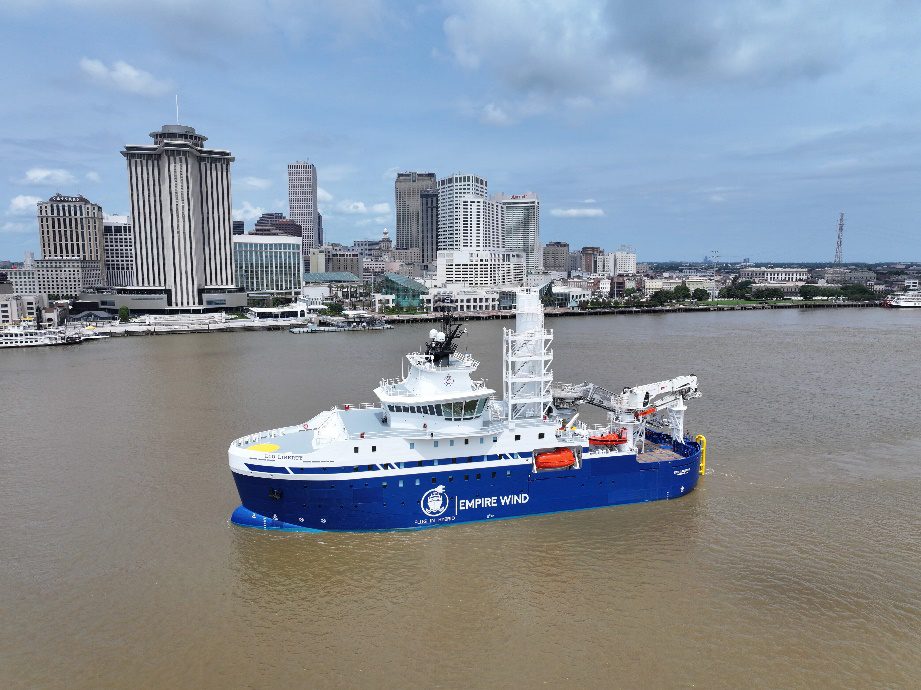TAIPEI, May 11 (Reuters) – In the port city of Taichung on Taiwan’s west coast, a crane hoists into place the end section of a white wind turbine tower that stands almost a hundred meters tall.
The turbine will be one of 111 spinning at a multi-billion dollar offshore wind project located up to 60 kilometers into the Taiwan Strait, which is being built by Denmark’s Orsted and will supply enough electricity for a million homes.
The wind farms are part of Taiwan’s ambitious push to power its massive tech industry with renewable energy and sit in a waterway that has become a focal point of tensions between Beijing and Washington.
For now, the economic arguments for developments like Orsted’s trump concerns about placing critical energy assets in what some security analysts believe could one day become a theater of war.
“It’s a huge demand, less supply situation,” Christy Wang, general manager of Orsted Taiwan, said. Orsted monitors cross-strait ties closely, but has not changed its strategy for Taiwan, Wang said, adding that the lifetime of a wind farm is decades.
“Obviously, the project is here for the long term,” she said.
The project is the largest outside of Europe for Orsted, the world’s biggest offshore wind firm, and its second in Taiwan since entering in 2016, drawn by the fast and consistent winds, government support for renewables and clear regulation.
Since then, the global geopolitical mood has changed significantly with Russia’s invasion of Ukraine reframing the way businesses see political risk.
But even as heightened military pressure from Beijing – which fired missiles over Taipei in August – has increased demand for war coverage, developers remain largely undeterred and continue to vie for capacity in Taiwan.
RISK REWARD
For Taiwan, which imports 98% of its energy, offshore wind is crucial to strengthening energy security and is expected to generate about T$1 trillion ($32.6 billion) in investments by 2025, Lee Chun-li, deputy director-general of Taiwan’s Bureau of Energy, told Reuters.
Next in Orsted’s pipeline is its third project in Taiwan, with expected completion in 2025. All the power produced by that 920-megawatt farm for two decades has already been purchased by Taiwan Semiconductor Manufacturing Company (TSMC) 2330.TW, the world’s largest contract chipmaker.
TSMC, which accounted for 6.4% of Taiwan’s electricity consumption in 2021, told Reuters it continues to pursue long-term green power contracts in Taiwan, aiming to drive the development of domestic renewables.
Joseph Wu, vice president at chipmaker Nanya Technology Corp and chair of SEMI Taiwan’s sustainable manufacturing committee, said while his company has signed smaller contracts with solar and onshore wind firms, offshore wind could secure greater capacity as pressure to use green energy grows.
Taiwan’s colossal appetite for renewables has helped make it one of the leading offshore wind markets outside Europe, but the industry also faces pandemic-related delays, soaring costs and supply issues.
With large swathes of Taiwan’s territorial waters restricted due to defense, shipping and other uses, offshore wind developers will soon run out of space.
To reach its 2050 carbon neutrality target and generate 40-55 gigawatts (GW) through wind power, Taiwan is amending the law to allow the construction of wind farms beyond 12 nautical miles from its territorial baseline and plans to announce a tender for floating wind demonstration projects at the end of this year.
New floating wind technology will enable deployment into deeper waters, where developers can’t install fixed-bottom turbines.
Spanish developer BlueFloat Energy entered Taiwan last year and plans to bid for the floating demonstration project and then for a 1GW project 25 kilometers off the coast of Hsinchu, Taiwan’s tech hub.
“Real estate for fixed-bottom is becoming exhausted, so you’re moving into deeper waters just by progression,” said BlueFloat country manager Michael Pinkerton.
Already looking at other sites in Taiwan, Pinkerton said the government will evaluate the risks and determine how far out they can build. “If it’s closer to China, so be it.”
‘IMPOSSIBLE TO CALCULATE’
China, which regards Taiwan as its own territory, has never renounced the use of force to bring the democratic island under its control. Taiwan’s government rejects Chinese sovereignty claims, saying only the island’s people can decide their future.
While most developers are not scared off by the prospect of war, some are looking to insurance as a way to hedge against the possibility.
“There is no insurance you can’t buy. It’s a question of whether you want to pay the price,” insurance broker Clive Lin told offshore wind developers in a packed lecture hall in Taipei.
Lin, chief technology officer at Alexander Leed Risk Services, recalled how a decade ago he shrugged off foreign investors’ questions about the risk of war with China.
“Now, many foreign developers in Taiwan are asking if they can buy insurance for geopolitical risk,” spurred by large payouts from the Ukraine war, he said.
Orsted’s Wang said its wind farms “have insurance coverage for all relevant risks” but did not provide details. An Orsted spokesperson declined to comment on whether the company has political risk insurance for its Taiwan projects.
Three foreign energy firms, including two offshore wind developers, had inquired with Leed about political risk insurance for their Taiwan projects since last year, but so far the initial responses from insurers had been negative, Lin told Reuters.
Political risk insurance is typically not covered in mainstream insurance policies, so developers have to buy it additionally.
International requests for political risk insurance in Taiwan have risen, said Serene Soo, Asia political risk and structured credit leader at Marsh, one of the world’s largest insurance brokers.
However, “fresh capacity is tight for new projects.”
Scott Hsu, country director of K2 Management, which advises offshore projects in Taiwan, said few developers consider buying war cover because it would be prohibitively expensive.
“Of course everyone takes it seriously, but as soon as you factor it in, the costs are impossible to calculate,” Hsu said.
The risk of a military confrontation and its impact on Taiwan’s wind farms are hard to quantify, analysts say.
“The vulnerability is that now it has essentially electrical generation camps out in the middle of the water, closer to the mainland,” said Mark Cancian, senior advisor at the Center for Strategic and International Studies in Washington.
He said while there were risks of operational interference, there may be little strategic advantage for China to destroy such infrastructure.
“In a kinetic conflict invasion, Taiwan’s going to have so many other problems, offshore wind is going to be way down on the list,” Cancian said.
($1 = 30.7000 Taiwan dollars)
(Reporting by Sarah Wu; Editing by Anne Marie Roantree and Sam Holmes)
(c) Copyright Thomson Reuters 2023.

 Join The Club
Join The Club












